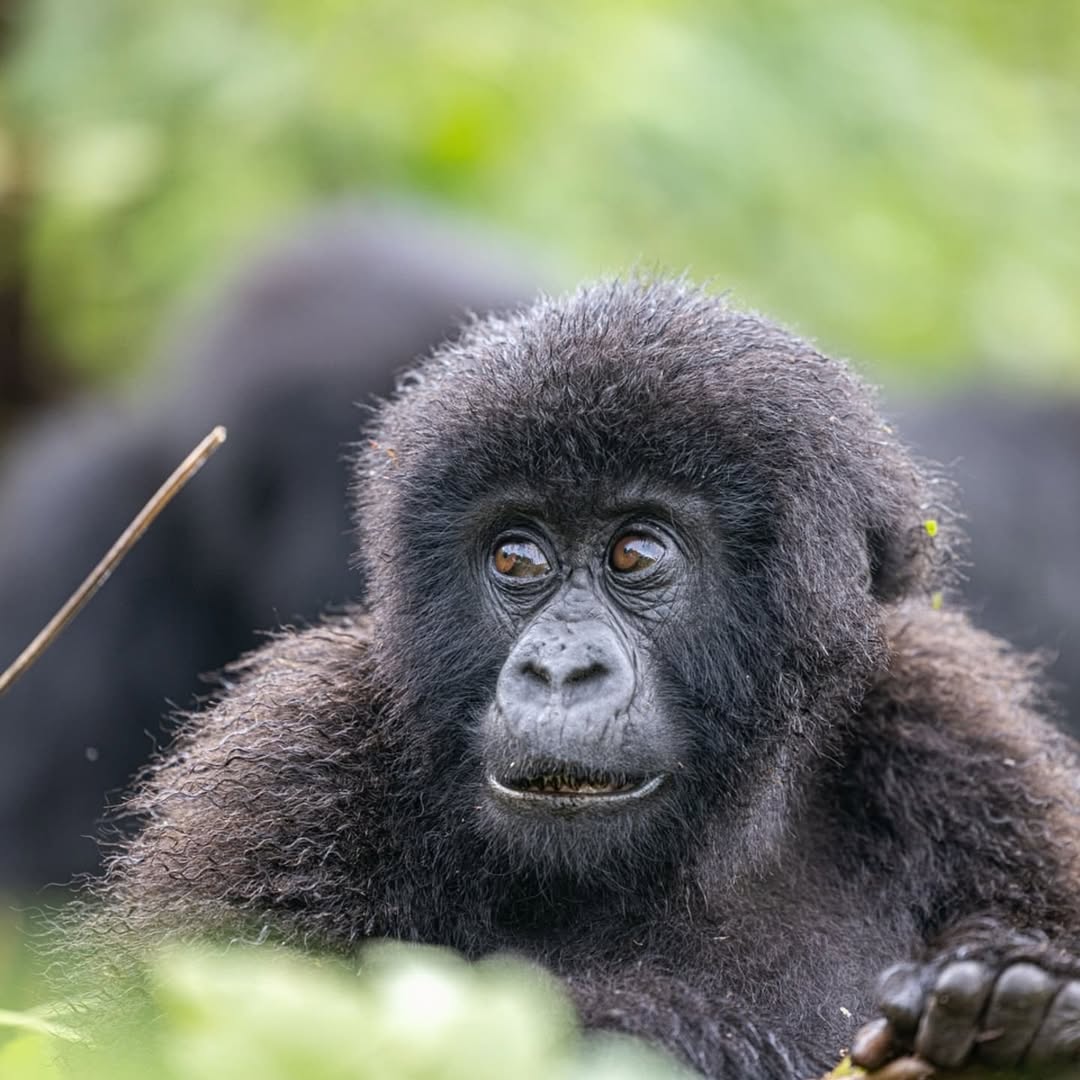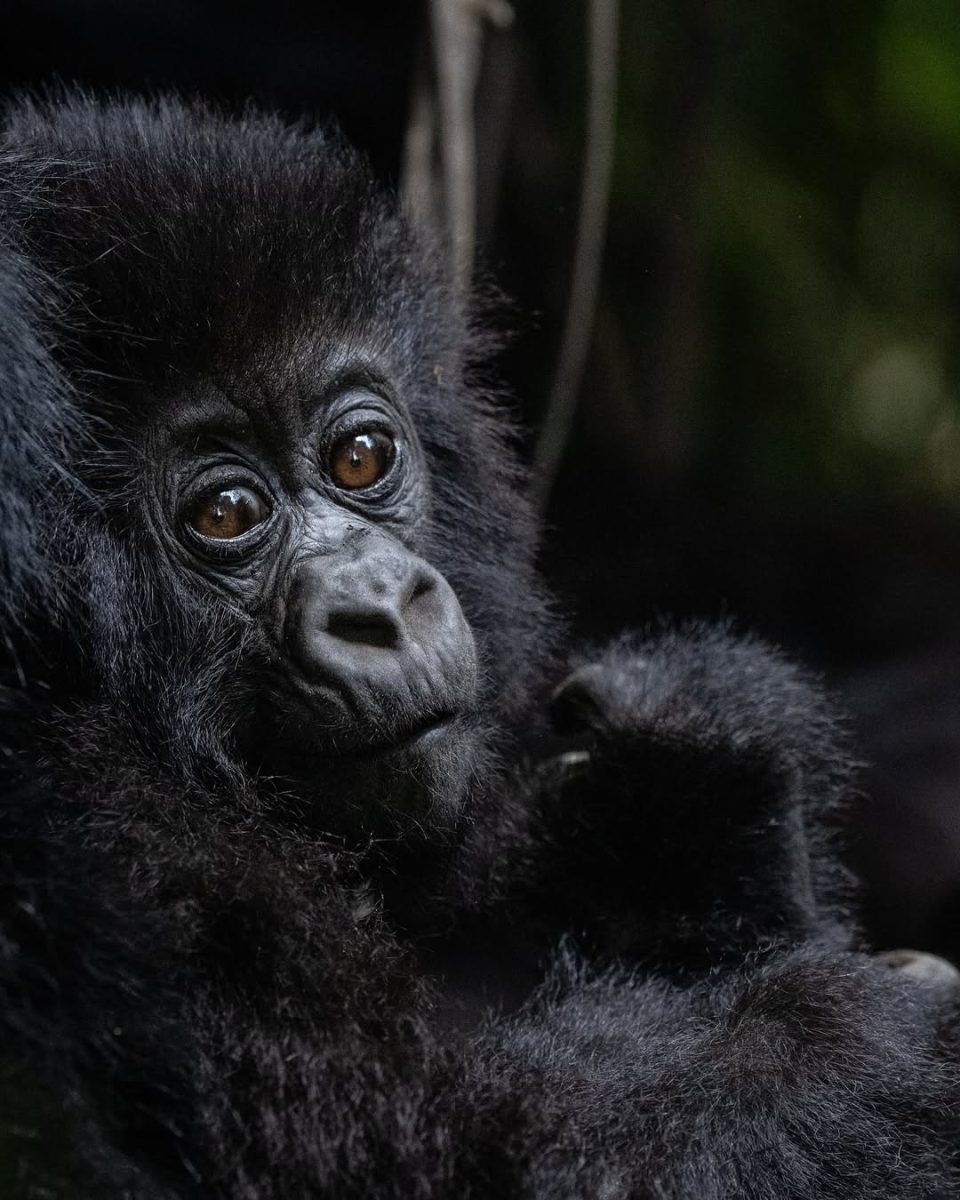Bwindi’s Role in Primate Conservation
May 16, 2025Endangered Species in Bwindi Forest
May 16, 2025When planning a gorilla trekking adventure in Uganda, Rwanda, or the Democratic Republic of Congo, you’ll often hear the names of specific gorilla families like Mubare, Susa, Rushegura, or Habinyanja. But have you ever wondered how these gorilla groups get their names? Understanding the naming process not only adds depth to your trekking experience but also connects you to the fascinating world of mountain gorilla conservation.
In this article, we explore how gorilla families are named, the meaning behind the names, and how each group becomes part of a protected and monitored lineage that travelers from around the world can encounter in the wild.
The Importance of Naming Gorilla Families
Naming gorilla families is a critical part of wildlife monitoring and conservation. Once a group of mountain gorillas becomes habituated—meaning they are slowly and safely accustomed to the presence of humans for research or tourism—they are given a name. This name allows rangers, researchers, and tourists to identify and monitor the group over time.
Each gorilla family typically consists of one or more silverbacks (dominant males), several females, juveniles, and infants. Once a group is named, it becomes part of a protected database managed by conservation authorities like the Uganda Wildlife Authority (UWA), Rwanda Development Board (RDB), or Virunga National Park Authority in the DRC.
Who Names the Gorilla Families?
The naming of gorilla families is typically done by park authorities and conservationists, often in collaboration with trackers and researchers who have followed the group over time. In some regions, the naming may also involve local communities, especially when the name is derived from local languages, landmarks, or historical events.

In Rwanda, the Kwita Izina ceremony is a national event where newborn gorillas are named in a cultural celebration, drawing global attention to conservation. While this is usually for individual gorillas, the tradition of naming groups often follows a similar cultural and conservation-minded approach.
What Influences the Name of a Gorilla Family?
Gorilla families are usually named based on a variety of factors, such as:
1. The Dominant Silverback
Many families are named after the lead silverback that founded or currently leads the group. For example, the Mubare group in Bwindi is named after the Mubare Hills where it was first seen, but its formation and leadership were closely tied to the silverback named Ruhondeza.
In Rwanda, the famous Susa group was named after the Susa River but is also linked to the dominant male and Dian Fossey’s early research.
2. Geographical Features
Sometimes a group is named after a prominent landmark or region where it was first observed, such as Rushegura (a place in Bwindi), Nkuringo, or Bweza. These place-based names help researchers track gorilla movement and habitat usage.
3. Behavior or Personality Traits
Some names reflect the behavioral tendencies or unique traits of the gorillas in the group. A particularly calm group might receive a name suggesting peacefulness, while a strong or aggressive silverback might inspire a more assertive name.
4. Cultural and Historical Events
In some cases, names are inspired by local culture, tribal language, or even significant events in conservation history. This helps tie the group’s identity to the human communities living nearby, strengthening the bond between conservation and local culture.
Famous Gorilla Families and Their Names
Gorilla families are not only key to trekking tourism but are also central to conservation, scientific research, and storytelling. Each family carries a legacy shaped by its dominant silverback, history of habituation, and territorial range. Below are some of the most iconic gorilla families in Bwindi Impenetrable National Park (Uganda) and Volcanoes National Park (Rwanda)—each offering a unique trekking experience.
Mubare Family – Buhoma Sector, Bwindi, Uganda
The Mubare family holds a special place in Uganda’s conservation story as the first habituated gorilla group in the country, opened for tourism in 1993. It was named after the Mubare Hills, where the group was first discovered. The legendary silverback Ruhondeza led the family with distinction for years, gaining widespread admiration for his gentle nature. Even after his retirement and eventual death in 2012, his story is still fondly shared by rangers and guides. Today, the Mubare group continues to thrive under new leadership, offering excellent sightings near Buhoma.
Susa Group – Volcanoes National Park, Rwanda
The Susa group is among the most famous gorilla families in Africa, thanks in large part to the pioneering work of Dr. Dian Fossey, who studied them extensively during her years at the Karisoke Research Center. The group is named after the Susa River, and it once held the record as the largest known mountain gorilla group, with over 40 members. Trekking to visit the Susa group is often one of the most challenging due to their high-altitude range near Mount Karisimbi, but it’s richly rewarding. The group includes twins—Impano and Byishimo—a rarity in the gorilla world.
Habinyanja Group – Buhoma Sector, Bwindi, Uganda
Named from the local Rukiga word “Habinyanja,” meaning “a place with water,” this family was discovered near a swamp. The group was habituated in 1997 and has gone through several leadership changes. Originally led by Munguris, the family later saw leadership from silverbacks like Rwansigazi and Makara, reflecting the natural shift of power within gorilla societies. The Habinyanja family is known for its strong female presence and intriguing internal dynamics.
Rushegura Family – Buhoma Sector, Bwindi, Uganda
The Rushegura group was formed in 2002 after a splinter from the Habinyanja family, led by the then-young silverback Mwirima, who preferred a smaller, more peaceful group. Rushegura is derived from “Ebishegura,” a tree species common in their home range. This family is known for being calm and accessible, often spotted near the Buhoma park headquarters, which makes it a favorite for less strenuous treks.
Bweza Family – Rushaga Sector, Bwindi, Uganda
Formed as a breakaway group from the Nshongi family, the Bweza group is led by silverback Bweza, who asserted dominance and claimed a faction of the original group. The Bweza family is one of the most visited in the Rushaga sector due to its habituated status and relatively accessible location. The group’s dynamics have been stable over recent years, making it a rewarding choice for trackers.
Nkuringo Family – Nkuringo Sector, Bwindi, Uganda
Named after the Nkuringo hill, this was the first habituated group in the southern sector of Bwindi. Initially led by the dominant silverback Nkuringo, the group became a tourism staple after habituation in 2004. After Nkuringo’s death, leadership passed to Safari, then to his successor Rafiki, a beloved silverback tragically killed by poachers in 2020. The group continues under the leadership of new silverbacks, including Rwiririza, and remains a symbol of resilience and conservation success.
Nshongi Family – Rushaga Sector, Bwindi, Uganda
Once the largest habituated gorilla family in Bwindi, with over 35 individuals, the Nshongi group was named after the Nshongi River, where it was first seen. Its dominant silverback, Nshongi, was known for his calm and diplomatic leadership. Over time, due to natural dispersal and power struggles, splinter groups like Bweza and Busingye were formed from Nshongi’s original group.
Sabyinyo Group – Volcanoes National Park, Rwanda
This group is named after Mount Sabyinyo, one of the Virunga volcanoes. It’s known for being relatively easy to reach, making it a great option for first-time trekkers. For years, it was led by Guhonda, the largest known silverback in the region, weighing over 220 kg. His dominance and charisma made the group a top attraction in Rwanda. Although Guhonda is now aging, his presence and legacy continue to attract visitors.
Amahoro Group – Volcanoes National Park, Rwanda
Amahoro means “peace” in Kinyarwanda, which suits the group’s gentle temperament. Led by silverback Ubumwe, the group is known for its calm interactions and minimal conflicts. Located in the Karisoke area, treks to reach the Amahoro group are moderately challenging but offer deeply rewarding encounters with a tranquil gorilla family.

Why Naming Matters in Gorilla Conservation
Naming gorilla families goes beyond just convenience—it plays a crucial role in strengthening the bond between humans and these majestic primates.
For many tourists, trekking to visit a gorilla family with a memorable name like Mubare, Susa, or Habinyanja transforms the experience from a generic wildlife encounter into a deeply personal adventure. Travelers often refer to these families by name long after their trek, recounting stories about the silverback’s behavior or a mother cradling her infant, as if speaking of close acquaintances.
This emotional connection not only enriches visitor experiences but also fosters greater empathy and advocacy for gorilla protection. When travelers return home and share stories about “Ruhondeza” or “Guhonda,” they humanize conservation and help spread global awareness.
From a scientific and conservation management perspective, naming is vital for effective long-term monitoring. Conservationists and researchers rely on gorilla family names to systematically record health reports, births, deaths, group migrations, silverback dominance changes, and even conflict between groups.
This structured naming approach helps park rangers and veterinary teams identify which groups may require intervention, which families are increasing or declining in numbers, and how specific behaviors evolve over time.
In regions like Bwindi and the Virunga Mountains, where dozens of habituated groups coexist, such naming protocols are essential for maintaining detailed field data, coordinating anti-poaching patrols, and implementing sustainable eco-tourism strategies. Simply put, naming is not just symbolic—it’s a strategic pillar of gorilla conservation success.
